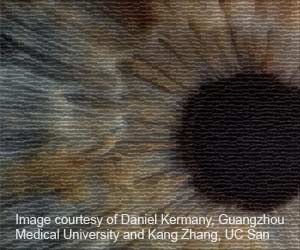
‘The gene therapy that reactivates CaMKII enzyme in retinal disease and serious retinal injury can help prevent blindness.’
Tweet it Now
The researchers focused on retinal ganglion cells, which process visual information by sending images to the brain. These cells can degenerate as a result of retinal injury and retinal disease.They demonstrated that how reactivation of a key enzyme known as CaMKII and its downstream signaling in retinal ganglion cells through a gene therapy approach can provide strong protection against vision loss in future.
"Neuroprotective strategies to save vulnerable retinal ganglion cells are desperately needed for vision preservation”, says senior author Bo Chen, PhD, Associate Professor of Ophthalmology and Neuroscience, and Director of the Ocular Stem Cell Program at the Icahn School of Medicine at Mount Sinai.
Glaucoma is the leading cause of irreversible visual impairment affecting 76 million people worldwide. The major barrier in restoring vision loss from glaucoma and other retinal diseases and injuries is the long nerve fibres known as axons, which allow retinal ganglion cells to process visual information by converting light that enters the eye into a signal transmitted to the brain, do not regenerate.
Neuroprotective strategies which preserve these retinal ganglion cell's axons and somas (the main body of the nerve cell from which axons branch off along the optic nerve to the brain) and prevent further vision loss are urgently needed.
Advertisement
They also found that insults to the retinal ganglion cell's somas or optic nerve injury to its axons led to inactivation of CaMKII and its downstream signaling target CREB (or cAMP response element binding protein).
Advertisement
The modified version of CaMKII, with a mutated amino acid is transferred to the targeted cells through an adeno-associated viral vector, a Food and Drug Administration-approved gene delivery system common to the growing field of gene therapy.
"Our research showed that CaMKII could indeed be a valuable therapeutic target to save retinal ganglion cells and preserve vision in treating potentially blinding diseases like glaucoma," says Dr. Chen, a winner of the Pew Scholars in the Biomedical Sciences award given to young investigators showing outstanding promise.
The fact that manipulation of CaMKII involving a one-time transfer of a single-gene adds to its vast potential to treat serious retinal conditions in humans. The next step is testing this in larger animal models, which may pave the way for starting clinical trials.
Source-Medindia















